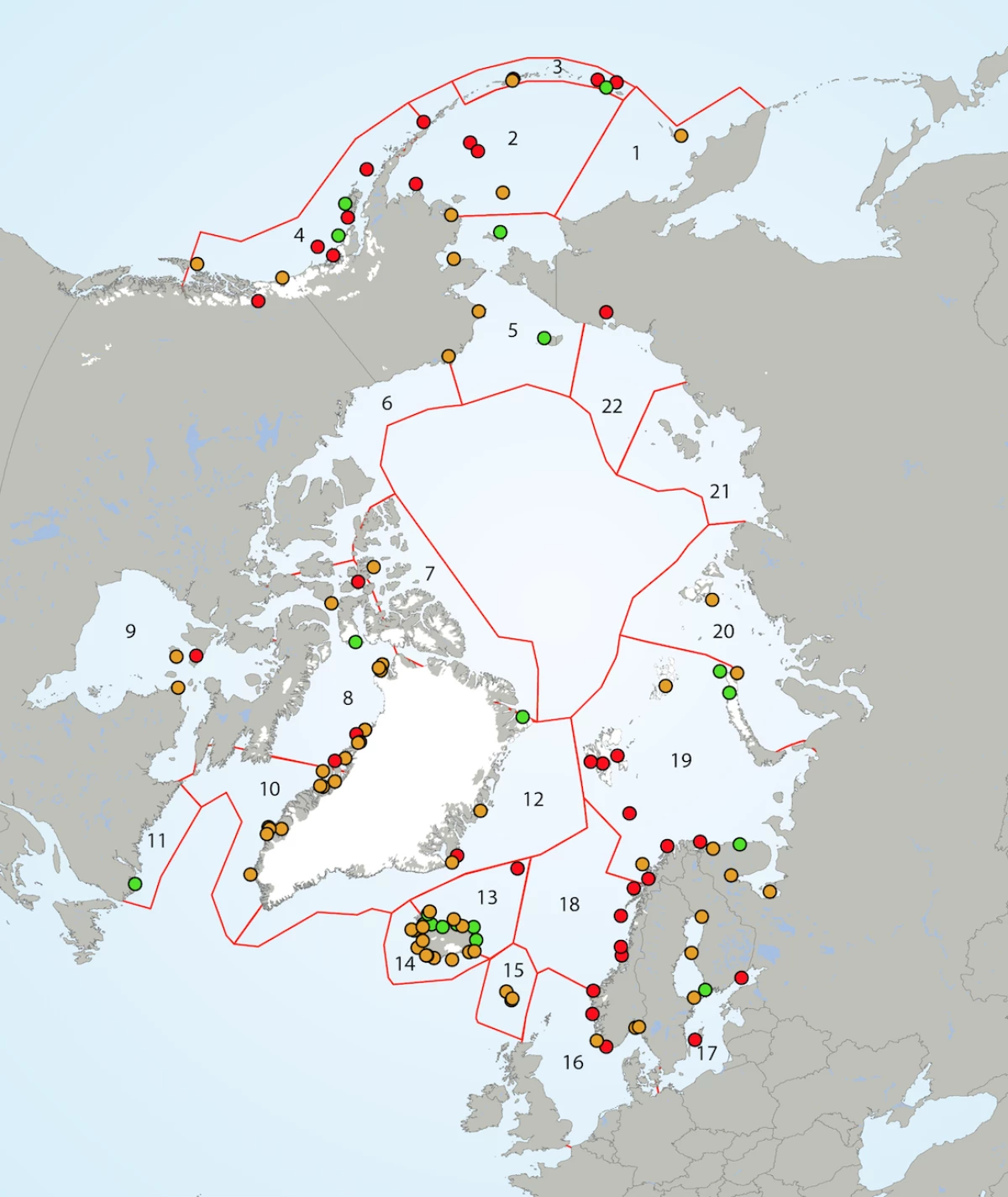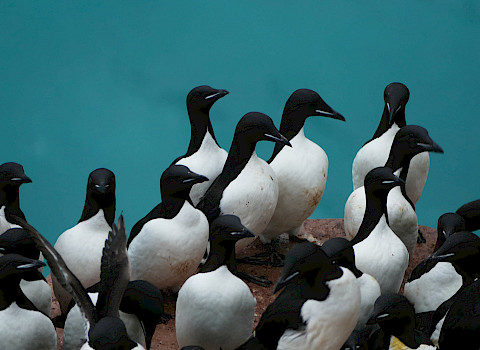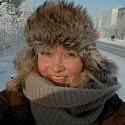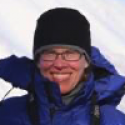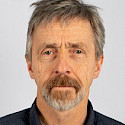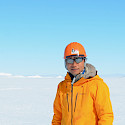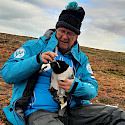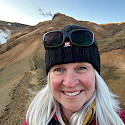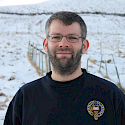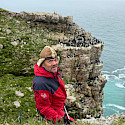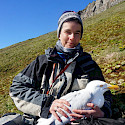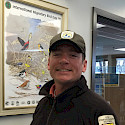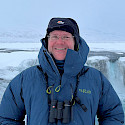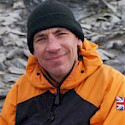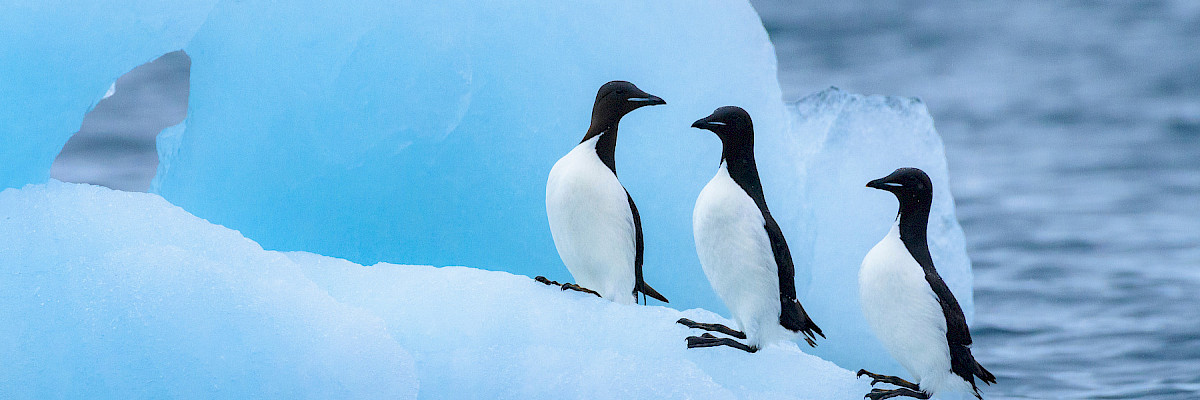
CBird: Seabird Expert Group
CBird promotes, facilitates, and coordinates conservation, management and research activities and improves communication between scientists and managers.
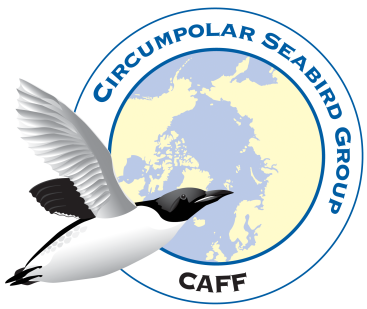 The Circumpolar Seabird Expert Group (CBird) promotes, facilitates, and coordinates seabird conservation, management, research and monitoring among circumpolar countries, and improves communication between seabird scientists, Indigenous Knowledge (IK) holders, managers, and the public inside and outside the Arctic.
The Circumpolar Seabird Expert Group (CBird) promotes, facilitates, and coordinates seabird conservation, management, research and monitoring among circumpolar countries, and improves communication between seabird scientists, Indigenous Knowledge (IK) holders, managers, and the public inside and outside the Arctic.
Populations of seabirds in the circumpolar region are large and diverse. Due to their migration across large areas of terrestrial, marine and coastal environments they serve as excellent indicators of overall ecosystem health.
Arctic countries often share the same seabird populations. Sixteen species of seabirds have circumpolar distributions while several other species are shared between two or more countries. Consequently, there is a joint and equal responsibility for the conservation of seabirds in and outside the Arctic. Arctic countries also share common stressors and threats to seabirds.
Traditionally, conservation, management, and research activities for seabirds in the Arctic have been poorly coordinated. Existing seabird groups are typically organized in a north-south manner and not in an east-west manner, resulting in a poorly coordinated circumpolar context.
CBird was a recognition that seabird conservation, management, and research activities could most effectively be achieved and harmonized by a multilateral approach of all Arctic countries. It was in this simple context that CBird was approved in 1993 within the organizational structure of CAFF.
Objectives
- To identify current and emerging seabird conservation, management, research, monitoring, and public outreach problems and opportunities in the Arctic and corresponding information and coordination needs
- To facilitate exchanging and publishing seabird information of mutual interest to scientists and managers in the circumpolar countries
- To facilitate harmonizing objectives, field methods and data analyses for similar studies of seabirds in the Arctic
- To facilitate development and coordination of cooperative research and management projects and conservation plans for circumpolar seabirds of mutual concern in the Arctic
- To promote and facilitate coordinating conservation initiatives for those Arctic seabirds that primarily winter outside the Arctic
- To coordinate CBird initiatives with activities of other seabird groups as appropriate
- To develop an integrated package of cooperative seabird activities or initiatives for the Conservation of Arctic Flora and Fauna annual work plan
- Coordinate the CAFF Circumpolar Seabird Monitoring Network project.
CBird Work Plan
CBird activities are organized according to an annual work plan approved by the CAFF Board.
Seabird Monitoring
The Circumpolar Seabird Monitoring Plan is a coordinated circumpolar monitoring plan to:
- monitor populations of selected Arctic seabird species, in one or more Arctic countries
- monitor, as appropriate, survival, diets, breeding phenology, and productivity of seabirds in a manner that allows changes to be detected
- provide circumpolar information on the status of seabirds to the management agencies of Arctic countries, in order to broaden their knowledge beyond the boundaries of their country thereby allowing management decisions to be made based on the best available information
- inform the public through outreach mechanisms as appropriate
- provide information on changes in the marine ecosystem by using seabirds as indicators
- quickly identify areas or issue in the Arctic ecosystem such as declining biodiversity or environmental pressures to target further research and plan management and conservation measures
The Circumpolar Seabird Monitoring Plan helps implement the seabirds component of the Circumpolar Biodiversity Monitoring Program.
The Circumpolar Seabird Monitoring Plan is a companion document to the earlier Framework for a Circumpolar Seabird Monitoring Network.
Seabird Assessments
CBird has developed assessments on key knowledge needs to facilitate circumpolar implementation of initiatives to conserve and protect species of circumpolar importance.
Species Strategies
CBird has developed strategies to facilitate circumpolar efforts to conserve, protect and restore popuations of circumpolar importance.
Latest publications
- Clairbaux, M., Rönkä, M., Anker-Nilssen, T., Artukhin, Y., Danielsen, J., Gavrilo, M., Gilchrist, G., Hansen, E. S., Hedd, A., Kaler, R., Kuletz, K., Olsen, B., Mallory, M. L., Merkel, F. R., Strøm, H., Fort, J., & Grémillet, D. (2024).
An ecologically sound and participatory monitoring network for pan-Arctic seabirds. Conservation Biology, 38, e14287. https://doi.org/10.1111/cobi.14287 - M. Clairbaux, W. Cheung, P. Mathewson, W. Porter, N.Courbin, J. Fort, H. Strøm, B. Moe, P. Fauchald, S. Descamps, H. Helgason, V.S. Bråthen, B. Merkel, T. Anker-Nilssen, I.S. Bringsvor, O. Chastel, S. Christensen-Dalsgaard, J. Danielsen, F. Daunt, N. Dehnhard, K.E. Erikstad, , A. Ezhov, M. Gavrilo, , Y. Krasnov, M. Langset, S.H. Lorentsen, M. Newell, B. Olsen, T.K. Reiertsen, G. Systad, T.L. Thórarinsson, M. Baran, T. Diamond, A.L. Fayet, M.G Fitzsimmons, M. Frederiksen, H.G. Gilchrist, T. Guilford, N.P. Huffeldt, M. Jessopp, K.L. Johansen, A.L. Kouwenberg, J.F Linnebjerg, L. M Tranquilla, M. Mallory, F.R. Merkel, W. Montevecchi, A. Mosbech, A. Petersen, D. Grémillet 2020
Meeting Paris agreement objectives will temper seabird winter distribution shifts in the North Atlantic Ocean
Global Change Biology, Volume27, Issue 7 April 2021 Pages 1457-1469
doi:10.1111/gcb.15497 - A Petersen, G J. Robertson, S Thorstensen, M L. Mallory 2020
Annual survival of Arctic terns in western Iceland
Polar Biology (2020) 43:1843–1849
https://doi.org/10.1007/s00300-020-02749-5 - S C. Davidson, G Bohrer, E Gurarie, S LaPoint, P J. MahoneyN T. Boelman, J U. H. Eitel, L R. Prugh, L A. Vierling, J JenneweinE Grier, O Couriot, A P. Kelly, A J. H. Meddens, R Y. OliverR Kays, M Wikelski, T Aarvak, J T. Ackerman, J A. AlvesE Bayne, B Bedrosian, J L. Belant, A M. Berdahl, A M. BerlinD Berteaux, J Bêty, D Boiko, T L. Booms, B L. BorgS Boutin, W. S. Boyd, K Brides, S Brown, V N. BulyukK K. Burnham, D Cabot, M Casazza, K Christie, E H. CraigS E. Davis, T Davison, D Demma, C R. DeSorboA Dixon, R Domenech, G Eichhorn, K Elliott, J R. EvensonK.M Exo, S H. Ferguson, W Fiedler, A Fisk, J FortA Franke, M R. Fuller, S Garthe, G Gauthier, G GilchristP Glazov, C E. Gray, D Grémillet, L Griffin, M T. HallworthA.L Harrison, H L. Hennin, J. M Hipfner, J HodsonJ A. Johnson, K Joly, K Jones, T E. Katzner, J W. Kidd, E C. KnightM N. Kochert, A Kölzsch, H Kruckenberg, B J. LagasséS Lai, J.F Lamarre, R B. Lanctot, N C. LarterA. D M. Latham, C J. Latty, J P. Lawler, D J Léandri-BretonH Lee, S B. Lewis, O P. Love, J Madsen, M MafteiM L. Mallory, B Mangipane, M Y. Markovets, P P. Marra, R McGuireC L. McIntyre, E A. McKinnon, T A. Miller, S Moonen, T MuG J. D. M. Müskens, J Ng, K L. Nicholson, I J Øien, C OvertonP A. Owen, A Patterson, A Petersen, I Pokrovsky, L L. PowellR Prieto, P Quillfeldt, J Rausch, K Russell, S T. SaalfeldH Schekkerman, J A. Schmutz, P Schwemmer, D R. Seip, A ShreadingM A. Silva, B W. Smith, F Smith, J P. Smith,K R. S. Snell, A Sokolov, V Sokolov, D V SolovyevaM S. Sorum, G Tertitski, J. F. Therrien, K Thorup, T. L TibbittsI Tulp, B D. Uher-Koch, R S. A. van Bemmelen, S Van WilgenburgA L. Von Duyke, J L. Watson, B D.Watts, J A. WilliamsM T. Wilson, J R. Wright, M A. Yates, D J. Yurkowski,R Žydelis, M Hebblewhite 2020
Ecological insights from three decades of animal movement tracking across a changing Arctic
Davidson et al., Science 370 (6517), 712-715.
DOI: 10.1126/science.abb7080 - S Descamps, T Anker-Nilssen, R T. Barrett, D B. Irons, F Merkel, G J. Robertson, N G. Yoccoz, M L. Mallory, W A. Montevecchi, D Boertmann, Y Artukhin, S Christensen-Dalsgaard, K.E Erikstad, H. G. Gilchrist, A L. Labansen, S.H Lorentsen, A Mosbech, B Olsen, A Petersen, J.F Rail, H M. Renner, H Strøm, G H. Systad, S I. Wilhelm, L Zelenskaya 2017
Circumpolar dynamics of a marine top-predator track ocean warming rates
Global Change Biology Volume23, Issue9 September 2017 Pages 3770-3780
DOI: 10.1111/gcb.13715 - Æ Petersen, S Thorstensen, B Þórisson 2014
Distribution and changes in numbers of Glaucous Gulls Larus hyperboreus breeding in Iceland.
Náttúrufræðingurinn 84(3-4): 153-163. (Icelandic, English summary). - Wood KA, S Thorstensen,SJ Lúðvíksson,K Brides,A Petersen 2020
Long-term trends in the survival rates of adult female Common Eider Somateria mollissima at three colonies in Iceland
Ibis 160(2): 413-430. doi: 10.1111/ibi.12521. - Gravley, M.C., G.K. Sage, A.M. Ramey, S.A. Hatch, V.A. Gill, J.R. Rearick-Whitney, A. Petersen & S.L. Talbot 2018. Development and characterization of polymorphic microsatellite markers in Northern Fulmar, Fulmarus glacialis (Procellariformes), and cross-species amplification in eight other seabirds. Genes & Genomics https://doi.org/10.1007/s13258-019-00819-5.
- Leat, E.H.K., S. Bourgeon, S.A. Hanssen, A. Petersen, H. Strøm, T.H. Bjørn, G.W. Gabrielsen, J.O. Bustnes, R.W. Furness, A. Haarr & K. Borgå 2018. The effect of long-range transport, trophic position and diet specialization on legacy contaminant occurrence in Great Skuas, Stercorarius skua, breeding across the Northeast Atlantic. Environmental Pollution 244: 55-65. doi: 10.1016/j.envpol.2018.10.005.
- Fayet, A.L., Freeman, T. Anker-Nilssen, A. Diamond, K.E. Erikstad, D. Fifield, M. Fitzsimmons, E.S. Hansen, M. Harris, M. Jessopp, A.-L. Kouwenberg, S. Kress, S. Mowat, C.M. Perrins, A. Petersen, I.K. Petersen, Þ.L. Þórarinsson, T.K. Reiertsen, G. Robertson, I.A. Sigurðsson, A. Shoji, S. Wanless & T. Guilford 2017. Ocean-wide drivers of migration strategies and their influence on population breeding performance in an endangered seabird. Current Biology (2017). https://doi.org/10.1016/j.cub.2017.11.009.
- Bustnes, J.O., S. Bourgeon, S., H.K. Leat, E. Magnúsdóttir, H. Strøm, S.A. Hanssen, A. Petersen, K. Ólafsdóttir, K. Borgå, G.W. Gabrielsen & R.W. Furness 2015. Multiple stressors in a top predator seabird: Environmental contaminants, population health and breeding conditions. PLoS ONE 10(7): e0131769. doi:10.1371/jouleatleatrnal.pone.0131769.
- Mallory, M.L., C.M. Little, E.S. Boyd, J. Ballard, K.H. Elliott, H.G. Gilchrist, J.M. Hipfner, A. Petersen & D. Shutler 2015. Leucocyte profiles of Arctic marine birds: correlates of migration and breeding phenology. Conservation Physiology 3. 10.1093/conphys/cov028.
- Petersen, A., D. Irons, H.G. Gilchrist, G.J. Robertson, D. Boertmann, H. Strøm, M. Gavrilo, Y. Artukhin, D.S. Clausen, K.J. Kuletz & M.L. Mallory 2015. The status of Glaucous Gulls Larus hyperboreus in the Circumpolar Arctic. The Arctic 68(1): 107-120. http://dx.doi.org/10.14430/arctic4462
- Magnúsdóttir, E., H.K. Leat, S. Bourgeon, J.E. Jónsson, R.A. Phillips, H. Strøm, A. Petersen, S.A. Hanssen, J.O. Bustnes & R.W. Furness 2014. Activity patterns of wintering Great Skuas Stercorarius skua. Bird Study 61(3): 1-8. doi: 10.1080/00063657.2014.940839.
- Bourgeon, S., H.K. Leat, E. Magnúsdóttir, R.W. Furness, H. Strøm, A. Petersen, G.W. Gabrielsen, S.A. Hanssen & J.O. Bustnes 2014. Feather corticosterone levels on wintering grounds have no carry-over effects on breeding among three populations of Great Skuas (Stercorarius skua). PlosOne 9(6) e100439. 6 pp.
- Leat, E.H.K., S. Bourgeon, E. Magnúsdóttir, G.W. Gabrielsen, W.J. Grecian, S.A. Hanssen, K. Ólafsdóttir, A. Petersen, R.A. Phillips, H. Strøm, S. Ellis, A.T. Fisk, J.O. Bustnes, R.W. Furness & K. Borgå 2013. Influence of wintering area on persistent organic pollutants in a breeding migratory seabird. Mar. Ecol. Progr. Ser. 491: 277-293.
- Sonne, C., F.F. Rigét, H.K. Leat, S. Bourgeon, K. Borgå, H. Strøm, S.A. Hanssen, G.W. Gabrielsen, A. Petersen, K. Ólafsdóttir, E. Magnúsdóttir, J.O. Bustnes, R.W. Furness & M. Kjeldgaard-Hansen 2013. Organohalogen contaminants and blood plasma clinical-chemical parameters in three colonies of North Atlantic Great Skua (Stercorarius skua). Ecotoxicol. Environ. 92: 245-251. http://dx.doi.org/10.1016/j.ecoenv.2013.02.012.
- Bourgeon, S., H.K. Leat, E. Magnúsdóttir, A.T. Fisk, R.W. Furness, H. Strøm, S.A. Hanssen, A. Petersen, K. Ólafsdóttir, K. Borgå, G.W. Gabrielsen & J.O. Bustnes 2012. Individual variation in biomarkers of health: influence of persistent organic pollutants in Great Skuas (Stercorarius skua) breeding at different geographical locations. Environmental Research 118: 31-39. doi: http://dx.doi.org/10.1016/j.ecoenv.2013.02.012.
- Magnúsdóttir, E., E.H.K. Leat, S. Bourgeon, H. Strøm, A. Petersen, R.A. Phillips, S.A. Hanssen, J.O. Bustnes, P. Hersteinsson & R.W. Furness 2011. Wintering areas of Great Skuas Stercorarius skua breeding in Scotland, Iceland and Norway. Bird Study iFirst: 1-9./Bird Study 59(1): 1-9.
- Leat, E.H.K., S. Bourgeon, K. Borgå, H. Strøm, S.-A. Hanssen, G.W. Gabrielsen, A. Petersen, K. Ólafsdóttir, E. Magnúsdóttir, A.T. Fisk, S. Ellis, J.-O. Bustnes & R.W. Furness 2011. Effects of environmental exposure and diet on levels of persistent organic pollutants (POPs) in eggs of a top predator in the North Atlantic in 1980 and 2008. Environmental Pollution 159: 1222-1228. doi:10.1016/j.envpol.2011.01.036.
- Egevang, C., I.J. Stenhouse, R.A. Phillips, A. Petersen, J.W. Fox & J.R.D. Silk 2010. Tracking of Arctic Terns Sterna paradisaea reveals longest animal migration. Proceedings of the National Academy of Sciences 107(5): 2078-2081.
- Duneau, D., T. Boulinier, E. Gómez-Díaz, A. Petersen, T. Tveraa, R.T. Barrett & K.D. McCoy 2008. Prevalence and diversity of Lyme borreliosis bacteria in marine birds. Infection, Genetics and Evolution 8(3): 352-359.
- Irons, D.B., T. Anker-Nilssen, A.J. Gaston, G.V. Byrd, K. Falk, G. Gilcrist, M. Hario, M. Hjernquist, Y.V. Krasnov, A. Mosbech, B. Olsen, A. Petersen, J.B. Reid, G.J. Robertson, H. Ström & K.D. Wohl 2008. Fluctuations in circumpolar seabird populations linked to climate oscillations. Global Change Biology 14 (1-9): 1455-1463; doi: 10.1111/j.1365-2486.2008.01581.x.
- Strøm, H., Boertmann, D., Gavrilo, M. V., Gilchrist, H. G., Gilg, O., Mallory, M., Mosbech, A. & Yannic, G. 2019: Ivory Gull: Status, Trends and New Knowledge. Arctic Report Card – Update for 2019. https://arctic.noaa.gov/Report-Card/Report-Card-2019/ArtMID/7916/ArticleID/836/Ivory-Gull-Status-Trends-and-New-Knowledge
- Christensen-Dalsgaard, S., Anker-Nilssen, T., Crawford, R., Bond, A., Már Sigurðsson, G., Glemarec, G., Snær Hansen, E., Kadin, M., Kindt-Larsen, L., Mallory, M., Merkel, F. R., Petersen, A., Provencher, J. & Bærum, K. M. 2019: What’s the catch with lumpsuckers? A North Atlantic study of seabird bycatch in lumpsucker gillnet fisheries. Biological Conservation, Volume 240, December 2019, 108278. https://doi.org/10.1016/j.biocon.2019.108278, https://www.sciencedirect.com/science/article/pii/S0006320719307025
- Frederiksen, M., Linnebjerg, J. F., Merkel, F. R., Wilhelm, S. I. & Robertson, G. J. 2019: Quantifying the relative impact of hunting and oiling on Brünnich’s guillemots in the North-west Atlantic. Polar Research 2019, 38, 3378, http://dx.doi.org/10.33265/polar.v38.3378, https://polarresearch.net/index.php/polar/article/view/3378
- Yurkowski, D. J., M. Auger-Méthé, M. L. Mallory, S. N. P. Wong, H. G. Gilchrist, A. J. Gaston, F. Gagnon, A. E. Derocher, E. Richardson, N. J. Lunn, N. E. Hussey, M. Marcoux, R. Togunov, A. T. Fisk, L. A. Harwood, R. Dietz, A. Rosing-Asvid, E. W. Born, A. Mosbech, J. Fort, J. Iacozza, T. M. Brown, K. H. Westdal, J. Orr, B. Leblanc, S. T. Kessel, P. Blanchfield, S. Davis, M. Maftei, N. Spencer, L. McFarlane-Tranquilla, W. A. Montevecchi, B. Bartzen, D. L. Dickson, C. Anderson, and S. H. Ferguson. 2019. Abundance and species diversity hotspots of tracked marine predators across the Arctic. Diversity and Distributions 25: 328-345.
- Santora, JA, LB Eisner, KJ Kuletz, C Ladd, M Renner, GL. Hunt Jr. 2018. Biogeography of seabirds within a high-latitude ecosystem: Use of a data assimilative ocean model to assess impacts of mesoscale oceanography. Journal of Marine Systems 178: 38R11;51. https://doi.org/10.1016/j.jmarsys.2017.10.006
- Orben RA, Kokubun N, Fleishman AB, Will A, Yamamoto T, Shaffer SA, Paredes R, Takahashi A, Kitaysky AS, Persistent annual migration patterns of a specialist seabird, Marine Ecology Progress Series, 593,231-245. 2018. 10.3354/meps12459
- Mallory ML, Gilchrist HG, Janssen M, Major HL, Merkel F, Provencher JF, Strøm H. 2018. Financial costs of conducting science in the Arctic: examples from seabird research. Arctic Science 4:624-633. https://doi.org/10.1139/AS-2017-0019.
- Kokubun N, Takahashi A, Paredes R, Young RC, Sato NN, Yamamoto T, Kikuchi DM, Kitaiskaia E, Ito M, Watanuki Y, Will A, Lauth R, Romano MD, Kitaysky AS, Inter-annual climate variability affects foraging behavior and nutritional state of thick-billed murres breeding in the southeastern Bering Sea, Marine Ecology Progress Series, 593, 195-208. 2018. 10.3354/meps12365
- Keogan, K., Daunt, F., Wanless, S., Phillips, R.A., Walling, C.A., Agnew, P., Ainley, D.G., Anker-Nilssen, T., Ballard, G., Barrett, R.T., Barton, K.J., Bech, C., Becker, P., Berglund, P.-A., Birkhead, T., Bollache, L., Bond, A.L., Bouwhuis, S., Bradley, R.W., Burr, Z.M., Camphuysen, K., Catry, P., Chiaradia, A., Christensen-Dalsgaard, S., Cuthbert, R., Dehnhard, N., Descamps, S., Diamond, T., Divoky, G., Drummond, H., Dugger, K.M., Dunn, M.J., Emmerson, L., Erikstad, K.E., Fort, J., Fraser, W., Gaston, A., Genovart, M, Gilg, O., González-Solís, J., Granadeiro, J.P., Gremillet, D., Hansen, J., Hanssen, S.A., Harris, M., Hedd, A., Hinke, J., Igual, J.M., Jahncke, J., Jones, I., Kappes, P.J., Lang, J., Langset, M., Lescroël, A., Lorentsen, S.-H., Lyver, P. OR17;B., Mallory, M., Moe, B., Montevecchi, W.A., Monticelli, D., Mostello, C., Newell, M., Nicholson, L., Nisbet, I., Olsson, O., Oro, D., Pattison, V., Poisbleau, M., Pyk, T., Quintana, F., Ramos, J., Ramos, R., Reiertsen, T.K., Rodríguez, C., Ryan, P., Sanz-Aguilar, A., Schmidt, N.M., Shannon, P., Sittler, B., Southwell, C., Surman, C., Svagelj, W.S., Trivelpiece, W., Warzybok, P., Watanuki, Y., Weimerskirch, H., Wilson, P.R., Wood, A.G., Phillimore, A.P., and Lewis, S. 2018. Global phenological insensitivity to shifting ocean temperatures among seabirds. Nature Climate Change 8: 313-318.
- Hunt, G., M. Renner, K. Kuletz, S. Salo, L. Eisner, P. Ressler, C. Ladd, J. Santora. 2018. Timing of sea-ice-retreat affects the distribution of seabirds and their prey in the southeastern Bering Sea. Marine Ecology Progress Series. Available at: https://doi.org/10.3354/meps12383
- Hedd, A., I. L. Pollet, R. A. Mauck, C. M. Burke, M. L. Mallory, L. A. McFarlane Tranquilla, W. A. Montevecchi, G. J. Robertson, R. A. Ronconi, D. Shutler, S. I. Wilhelm, and N. M. Burgess. 2018. Foraging areas, offshore habitat use and colony segregation by incubating LeachR17;s Storm-Petrels Oceanodroma leucorhoa in the Northwest Atlantic. PLoS ONE 13: e0194389.
- Anderson CM, Iverson SA, Black A, Mallory ML, Hedd A, Merkel F, Provencher JF. 2018.
Modelling demographic impacts of a growing Arctic fishery on a seabird population in Canada and Greenland. Mar Environ Res. https://doi.org/10.1016/j.marenvres.2018.09.021.
Related news
Apply by January 31: North Atlantic Murre Harvest Management Coordinator
Apply by January 31, 2025 to become the part-time coordinator of the North Atlantic Murre Harvest Management project under CBird.Experts
-
David Grémillet
CBMP Marine- Seabirds Expert, AMBI Circumpolar Flyway Committee representativeFrance
Lead Working Groups
CAFFLead Arctic States & Permanent Participants
FinlandEngaged observers
FranceJapan
The Netherlands
United Kingdom
 Arctic Council Working Group
Arctic Council Working Group 